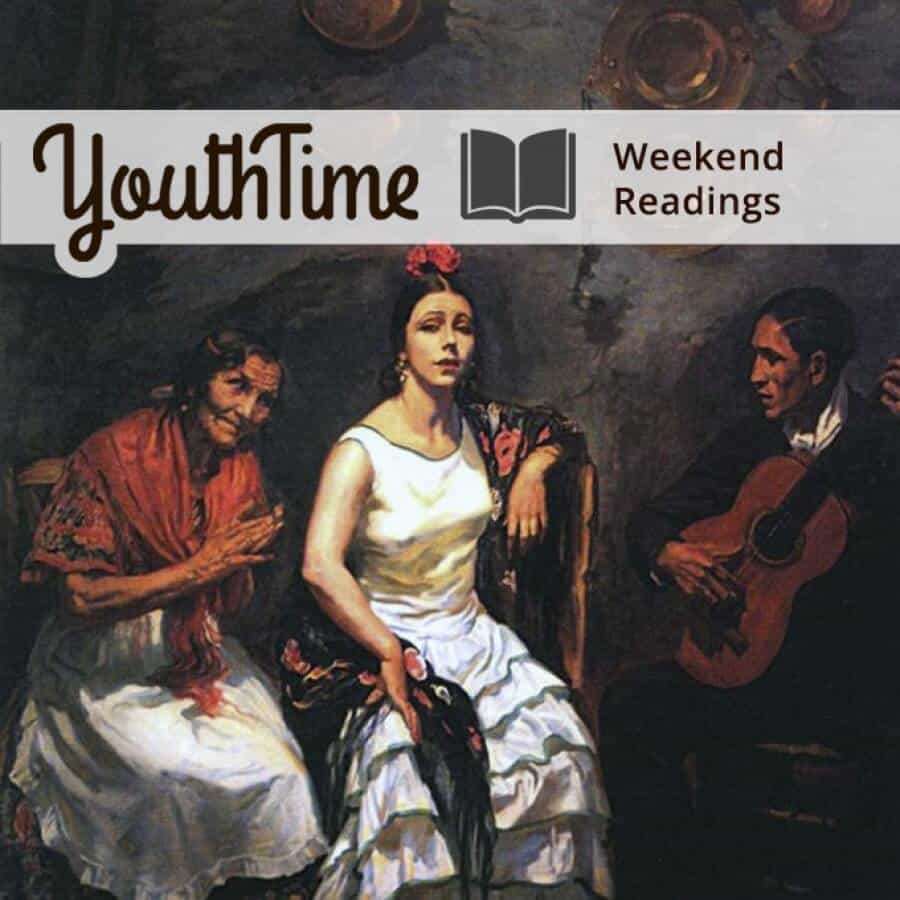Federico Garcia Lorca, 20th century Spanish artist and poet, gave lectures and speeches (which are preserved in written form and could be considered essays) about the deep songs of Andalusia - Cante Jondo (read online), and his own concept of duende (read online). Both of these notions are deeply carved into the Spanish identity. Spanish people, especially artists, are well known for their fiery and vivid temperament, as well as for the deeply moving art they create or perform. Given the fact that the Youth Time Global Forum is being held in Barcelona this year, why not try exploring Lorca's beautiful ideas about the true essence of the Spanish soul?
Cante Jondo is a traditional Andalusian song, which has its origins deep in the past, but in the 15th century it reached its full potential. It developed from a mosaic of cultures, including Arab, Jewish, and Gypsy culture. This genre is an expression of the history of the region; it reveals the typography of beautiful Spanish landscapes and it is very, very emotional. Original folk expression is less concerned with beauty, but more with the cathartic nature of art. The song is a true expression of the Andalusian soul. Cante Jondo means a deep song; a layered song that has that uncatchable moment which moves us from the inside. Its main feature is that it’s completely sincere and pure, there is no untruth in the pain it sings about. To shine truly, this song must be performed by a true artist, because only in live performance and through the clash between the words and music – can its essence be truly heard and felt. Cante Jondo reaches its peak when the words meet music, and music meets movement (that is, dance), and there you have one of the most sensual dances – flamenco. Exotic, sensual and full of passion, this dance makes us react physically, and the level of engagement is unbelievable. Flamenco dancers, both men and women, make our hearts pound faster; with every strong stroke of their feet or the sound of the castanets – our pupils dilate because of the excitement, and we are overwhelmed in the most positive way there is. That means witnessing and being a part of true art.
And what about duende? What exactly is duende, according to Lorca? The concept of duende is connected to the concept of cante jondo. Lorca explains duende as the almost demonic side of art, something that is undoubtedly connected with some higher forces, which gives it the power to touch us and play with our souls. We literally get possessed by the beauty of art. Lorca describes his efforts to define what gives the work of an artist duende:
[…] frequently I hear people say: ‘This has much duende’. Manuel Torre, the great artist of the Andalusian people, said to someone who sang for him: ‘You have a voice, you understand style, but you’ll never ever succeed because you have no duende.’
It is all about sincerity in carrying out the performance; duende is some sort of an incomprehensible string of an artist’s soul that causes profound emotional distress in listeners or observers. It is something that you must be born with, but it’s not simply a talent. Duende is what distinguishes an artist who gives a precise, we may say perfect performance, from the one who gives his heart to the audience, places himself in complete vulnerability and manages to commit and surrender himself fully to the tones or the motion. Lorca says it is not even necessary that the person who has duende performs one piece perfectly. Nobody will ever notice the mistakes, because there is this unexplainable, higher communication present. What, then, is duende? The poet says it’s a mysterious force of art that everyone feels, but no one can explain. This unusual power is linked to the traditional art of the guitar, singing, and flamenco. Spain, especially Andalusia, has an incredible cultural heritage. Duende is something that is considered to be integral to certain forms of art that are so captivating and even considered demonic because of their unbelievable strength. But, as mentioned before, nobody knows exactly what it is.
Certain art performances or art works move us from the inside, while other ones that seem similar – don’t touch us in any way. Lorca connected that to the mysterious parts of the Spanish soul, especially in Andalusia.
If you are interested in this topic and would like to read more of Lorca’s work related to it, try reading his Gypsy ballads (free online), and especially Poem of a Deep Song and Canciones. Also, look through this well prepared article about Lorca’s art and life, provided by Project Gutenberg.
Support us!
All your donations will be used to pay the magazine’s journalists and to support the ongoing costs of maintaining the site.
Share this post
Interested in co-operating with us?
We are open to co-operation from writers and businesses alike. You can reach us on our email at [email protected]/[email protected] and we will get back to you as quick as we can.









